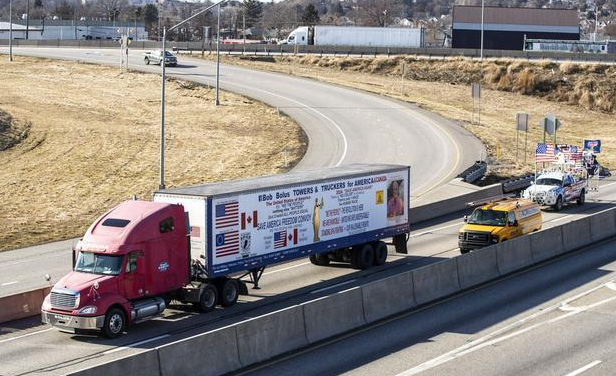
自今年的3月份以来,美国卡车运输需求出现急剧下降。据数据显示,今年一季度美国卡车每公里的运输费用从2.78美元下降到2.23美国,下降了55美分,对比去年同期下降了约22美分。这样的发展趋势不禁令人担忧。
卡车运输公司、经纪人和托运人对 2023 年提出的问题不是卡车运输费率会有多低,而是它们何时开始上升。人们正在形成一种共识,即美国现货整车运输率将在第一季度的某个时候触底,随后是第三季度的合同整车率。

第三方物流提供商Arrive预计,由于年底需求,本季度出现一些波动后,第一季度整车即期费率将继续下降,然后保持相对稳定,合同和现货卡车价格之间的差距将在整个年度逐渐缩小。3PL的预测要求,到2023年第三季度,全国合同费率将降至平均每英里约2.22美元。如果美国经济已经“正常化”,随着年终假期的临近,预计明年第三季度末卡车运输费率将上升。
Coyote Logistics预计托运人将在2023年经历低谷和高点。“我认为2023年可能是一个两半的故事,”Coyote首席解决方案官Nick Shroeger在会议上表示。上半年可能会相对疲软,下半年可能会发生回升。

可能是因为货运需求并没有随着现货市场定价而下降。卡车吨位继续逐年增加,工业需求具有弹性。“今年美国卡车运输市场的供需平衡已大幅放松,因此运费趋于平稳,并将在未来几个月进一步走软,”ACT Research高级分析师蒂姆·德诺耶(Tim Denoyer)在周二发布的11月卡斯货运指数报告中表示。
“当产能触底时,我们还要多久才能恢复平衡?这通常是大约四分之一的滞后,“Coyote首席解决方案官Nick Shroeger说。

在这种情况下,“我们说我们有可能在第三季度攀升并恢复平衡,”Coyote定价和采购战略副总裁Corey Klujsza在电话会议上表示。“这使12个月合同的下半年受到质疑。
“托运人必须意识到现在的市场状况,以及明年第三季度和第四季度的波动可能会发生什么,”Klujsza说。
卡斯货运指数确实看到托运人支出在10月份下降4.9%后,11月环比增长1.8%。卡斯推断,11月利率上升3.7%,扭转了10月的连续下降趋势。该数据与美国长途整车生产者价格指数的变动相关,该指数在经历了长达数月的下跌后于10月和11月上升。
货代网